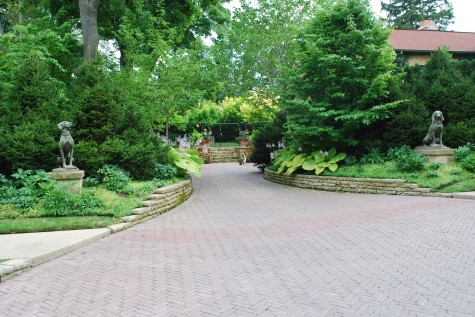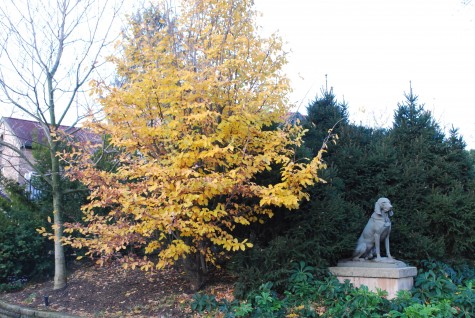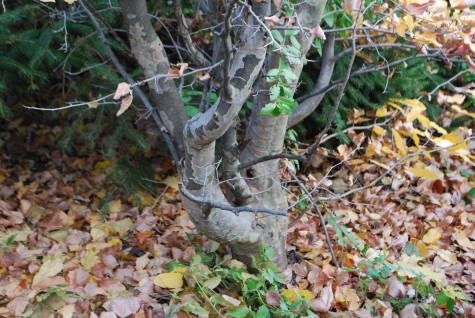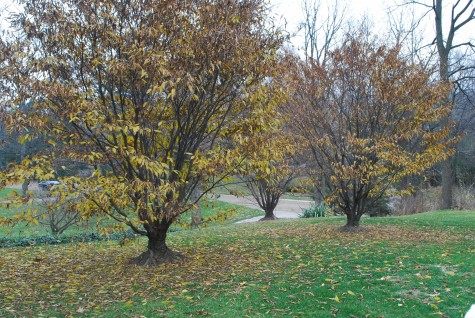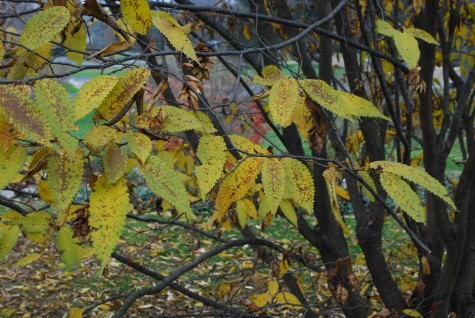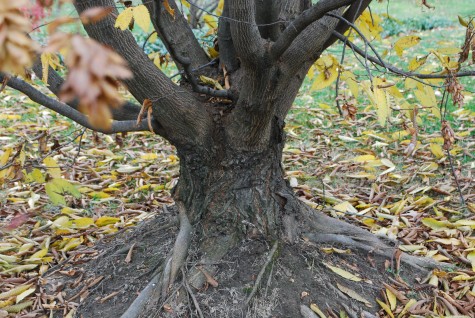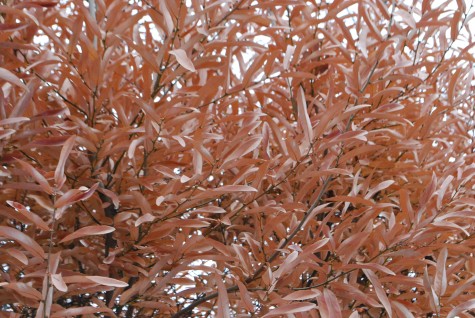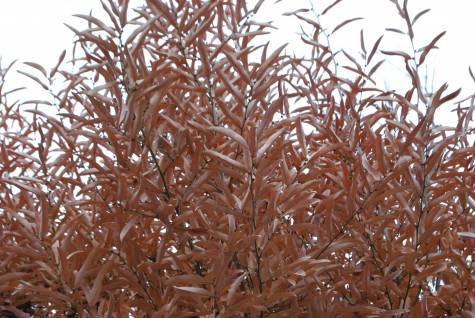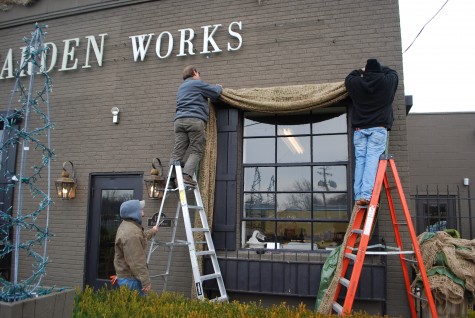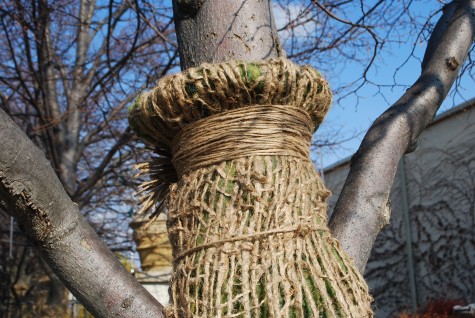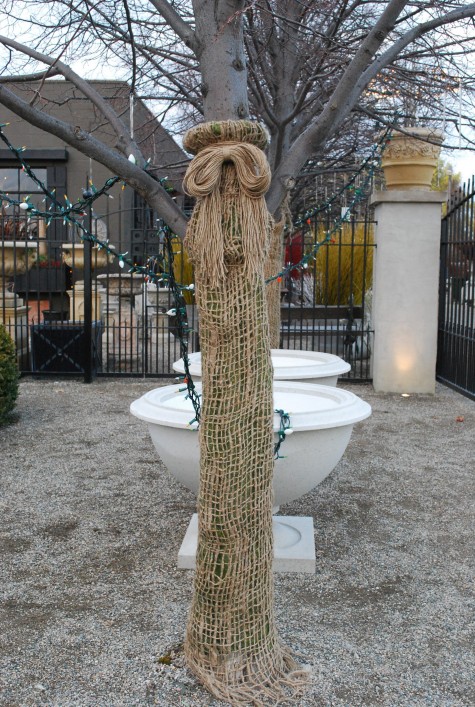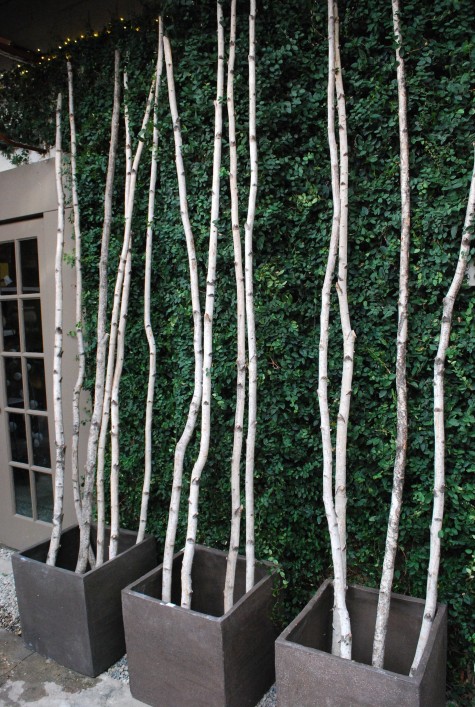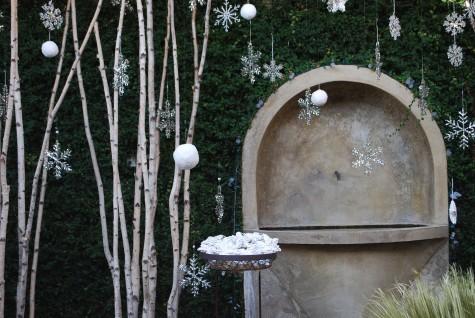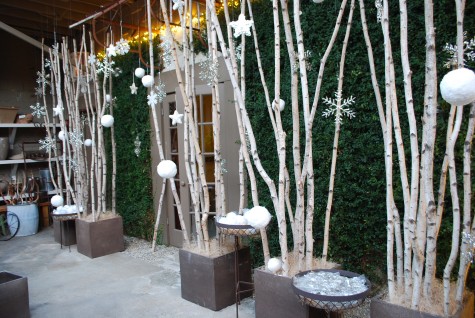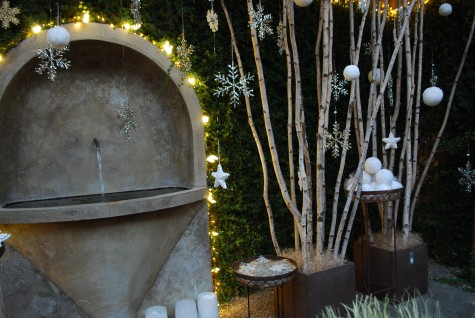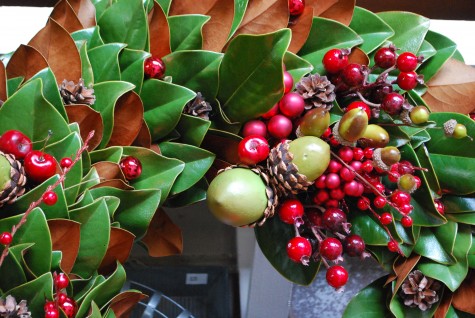
I know my holiday season is in full swing when the magnolia arrives. The wreaths that are three sizes, the garlands in two sizes-the branches in three sizes. I am in a gardener’s holiday heaven. I know I live and work in the midwest, and ought not to covet the leaves and branches from a tree that grows so far away from me-but I cannot help myself. I have told Buck, should I ever retire, I am moving where I can grow Magnolia Grandiflora. I am sure everything else will work itself out.

There are no end of beautiful magnolias that grow here. I have made it my business to plant them whenever it seems appropriate. The gorgeous bark and tree shape appeals to me the most. The astonishing and fleeting flowers I look forward to every spring. But all of the magnolias that grow here shed their leaves. The evergreen leaves of magnolia grandiflora are beautiful beyond belief. Please remember I am a gardener whose only source of reliably evergreen leaved plants runs to boxwood, and PJM rhododendrons. The big leaved rhodies do not do well here; the azaleas and hellebores are in ruins come spring.
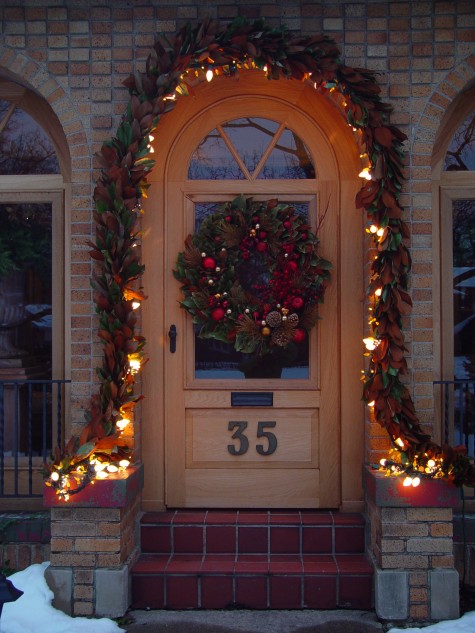
Each leaf of magnolia grandiflora is securely attached to its stem-it takes real effort to peel one off. No matter if the branch is fresh or dry-be prepared for some resistance. The front/sun sides of the leaves are a leatherly, glossy, healthy deep forest green. The obverse-a felted cinnamon brown to die for. These transplanted wreaths and garlands brave the vile Michigan winter incredibly well. That saturated and deep forest green leaf will dry; that deep green color will eventually become a cross between platinum and pale olive.
 I buy the wreaths with all green faces, and a mix of the green and felted cinnamon obverse faces-I like both. Magnolia is a fairly formal material at the holidays, I admit. It makes for a wreath not one bit like the bits I collect from my garden, and assemble. I am a dirt gardener-so why do I so like this rock star from out of town? All my gardenering life I have been reading about and looking at the holiday decorations at Winterthur. How they express the holiday is a consummate American expression. I have faded sheets from magazines, books-I learned so much from looking at how they express the holiday. This wreath, stuffed with every manner of an expression of green-juicy. Classic.
I buy the wreaths with all green faces, and a mix of the green and felted cinnamon obverse faces-I like both. Magnolia is a fairly formal material at the holidays, I admit. It makes for a wreath not one bit like the bits I collect from my garden, and assemble. I am a dirt gardener-so why do I so like this rock star from out of town? All my gardenering life I have been reading about and looking at the holiday decorations at Winterthur. How they express the holiday is a consummate American expression. I have faded sheets from magazines, books-I learned so much from looking at how they express the holiday. This wreath, stuffed with every manner of an expression of green-juicy. Classic.
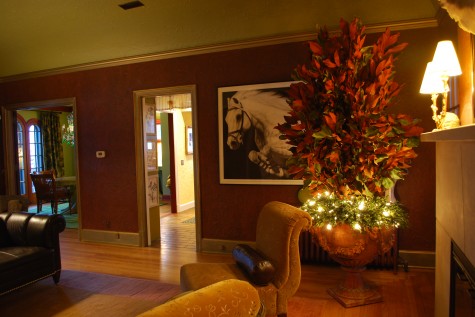 Last year I had a client with a 14 foot Christmas tree to decorate. I of course had not planned and shopped for this a year ago; I was on deck, and needed backup. I took everything I had in boxes in the basement, and added to them; my collection trimmed her tree. Don’t begin to feel sorry for me. I was happy to have an opportunity for big change dropped in my lap. The result-6 tall magnolia branches stuffed into a pot made for our Christmas tree. No ornament-just some lights at the base. These magnolia branches-all and everything I could have hoped for. Buck and I loved our Christmas tree.
Last year I had a client with a 14 foot Christmas tree to decorate. I of course had not planned and shopped for this a year ago; I was on deck, and needed backup. I took everything I had in boxes in the basement, and added to them; my collection trimmed her tree. Don’t begin to feel sorry for me. I was happy to have an opportunity for big change dropped in my lap. The result-6 tall magnolia branches stuffed into a pot made for our Christmas tree. No ornament-just some lights at the base. These magnolia branches-all and everything I could have hoped for. Buck and I loved our Christmas tree.

Magnolia wreaths can be tough to decorate. Plan to skewer all of your ornament through the leaves. No harm done, no kidding. Evergreen stems in a wreath leave gaps where a pick might slide in. Magnolia arrives sleek, and flat. Should you be looking for pockets i n which to tuck the treasure of the garden-let that wreath dry for a week. Those flat leaved wreaths open up, and curl as they dry.
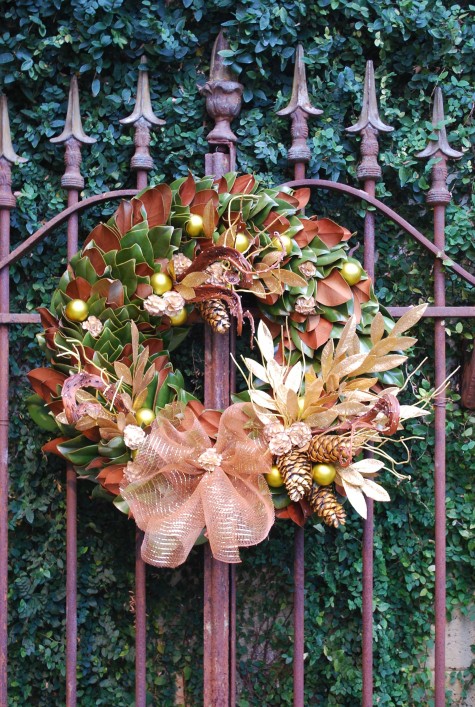 I buy all of my southern magnolia at the holidays from The Magnolia Company. They do incredibly beautiful work. They ship fast. Should you be really far away from me-you can order on line. They farm magnolia branches and leaves-no kidding. They sell their stock trees on occasion. Their magnolia at the holidays-a renewable resource.
I buy all of my southern magnolia at the holidays from The Magnolia Company. They do incredibly beautiful work. They ship fast. Should you be really far away from me-you can order on line. They farm magnolia branches and leaves-no kidding. They sell their stock trees on occasion. Their magnolia at the holidays-a renewable resource.
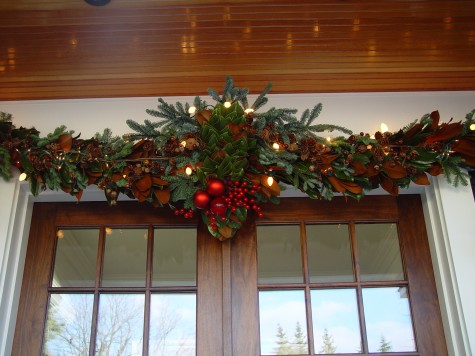 Over the past 10 years or so, I am pleased to say I have placed no small amount of southern magnolia at the holidays.
Over the past 10 years or so, I am pleased to say I have placed no small amount of southern magnolia at the holidays.
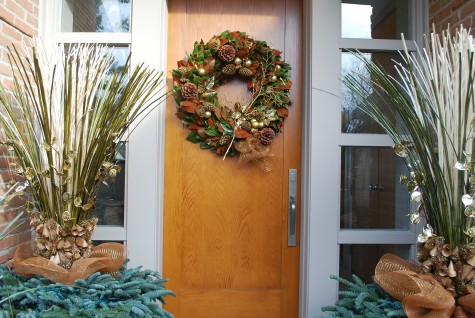 Visually rich and compelling-yes. The gold metallic sinamay is a beautiful foil for the leaves. You may find a much less formal wreath treatment just as beautiful. The big idea here-people make for compelling-not materials. This magnolia wreath is a mix of front and back views of the leaves. The brown green and gold color scheme is very pretty with the door.
Visually rich and compelling-yes. The gold metallic sinamay is a beautiful foil for the leaves. You may find a much less formal wreath treatment just as beautiful. The big idea here-people make for compelling-not materials. This magnolia wreath is a mix of front and back views of the leaves. The brown green and gold color scheme is very pretty with the door.
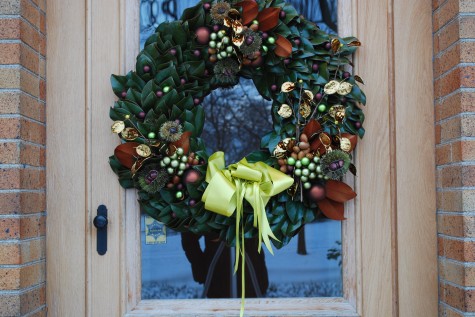
It may need to wait until December 23rd, but there comes that day when I hang that southern magnolia holiday wreath on my front door. I will persist with it-until the end of March. The magnolia enriches my winter.
